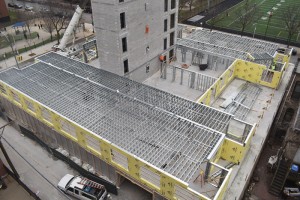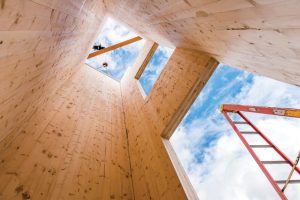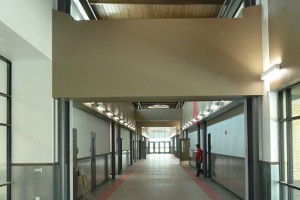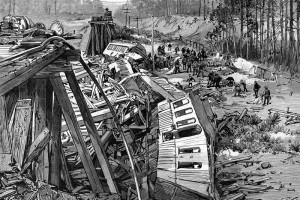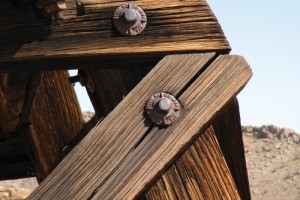Beginning in April 2011, the National Council of Examiners for Engineering and Surveying (NCEES) recommended the 16-hour structural exam as the standard for demonstrating minimum competence in the practice of structural engineering. As a result, structural engineering became the only professional engineering discipline requiring more than an 8-hour exam in many jurisdictions. Prior to this date, some states already had some form of structural engineering legislation and, since 2011, more states have either passed or attempted to pass S.E. legislation. For Georgia, the Structural Engineers Association of Georgia (SEAOG) started looking at developing an easily understandable and compelling reason for structural engineering legislation soon after April 2011. This included making sure complex structures were being designed by qualified engineers and addressing a competitive disadvantage that engineers in Georgia who were designing structures faced, compared to engineers from states that had a P.E., S.E. designation.
…Review Category : Articles
Having been involved with NCSEA for the past 14 years, I have always admired and respected the leadership and unification that the organization provides to the structural engineering profession. As a former NCSEA Summit Delegate and President of the Structural Engineers Association of Montana, I quickly started to integrate myself into the NCSEA Summit Committee, and – after a few years – reveled in the new energy and growth the Young Member Group Support Committee and SE3 initiatives infused into the organization. So, in the Fall of 2020, I jumped at the chance to join the NCSEA Board as a Director, soon realizing that I was joining at a promising time in the lifespan of NCSEA, following the establishment of the NCSEA Foundation.
…Multi-unit residential construction continues to see an increasing demand for living units above a one- or two-story podium. The demand is primarily driven by maximizing residential unit density within permissible building heights for a particular construction type. Architecturally, the podium’s primary purpose is a horizontal separation between different occupancies, creating open space for parking, retail, or amenity space on the lower floor(s). Yet, for the structural engineer, the podium level is expected to transfer significant loads from the density of the program above the podium to a different structural system below. While “stick-built” construction is historically wood-framed, the prevalence of cold-formed steel is increasing the structural demands on the podium level due to the ability to construct as many as ten stories of residential (Figure 1). While the design focus is often the structural efficiency of the residential units, due consideration is required for a properly designed, detailed, and constructed podium structure.
…Corrosion of metals used in construction is an age-old problem, one with annual costs exceeding $300 billion today in the United States alone. In addition to economic losses, corrosion of structural and non-structural elements creates a significant safety risk, particularly with critical connections. Fortunately, technologies have been developed to help address many of the causes of corrosion of these connections with effective products and processes.
…The building community has rediscovered the oldest building material – wood! Over the past decade, Cross-Laminated Timber (CLT) has gained momentum in the U.S., with over 500 projects currently in design or constructed to date. It is rare for a new building material like CLT to come along so quickly and become an integral part of the structural engineer’s toolbox. CLT has many advantages, including sustainability, speed of construction, strength, and beauty – all of which are the driving forces behind the doubling quantity of projects each year (www.woodworks.org, https://bit.ly/3wQCt8D). In addition, the desire to design sustainable and economic structures has many investors, designers, and builders captivated with CLT and wondering how they can find creative ways to integrate this material into their next project.
…Part 1: A Marriage of Codes and Artistry
Tornado season in the United States is officially March through June, but tornadoes, including major outbreaks, have been documented in the United States during every month of the year. The U.S. sees more tornado and other high wind activity than any other place on earth. In fact, as many as 1,200 to 1,500 tornados could occur in any given year. Interestingly, the number of tornado events is generally increasing from one year to the next. In 2004, the highest number in recent history in the U.S were recorded, with over 1,800 tornadoes. As recently as 2008 and 2011, 1,700 tornadoes occurred. With the population increasing year after year, this presents community issues needing to be addressed through storm shelter design, documentation, and construction.
…Blackshear, Georgia, is located about 90 miles southwest of Savannah. The Savannah, Florida, and Western Railroad (formerly the Atlantic Gulf Railroad) ran southwesterly from Savannah to Bainbridge and opened in December 1867 after starting construction as early 1859. About one mile northeast of Blackshear, the line crossed the Alabaha (sometimes called the Hurricane) River on an iron bridge that was flanked by long wooden trestles as was common at the time to keep costs low. The trestle that failed was reported to be 300 feet long and 25 feet above the ground. The trestle had been updated two years prior to the disaster with the Engineering News reporting,
…All wood is subject to some degree of seasoning, i.e., drying until it acclimates to the humidity conditions of the surrounding atmosphere at in-service conditions. Seasoning occurs when the wood is air-dried, dried in a kiln under controlled conditions, or subject to radio frequency drying. As wood loses (or gains) moisture, it will shrink (or swell) until it reaches equilibrium with the constantly changing level of moisture of its immediate environment. As shown in Figure 1, seasoning checks are separations of the wood fibers that develop along the length of lumber or timber due to shrinkage of the wood as it dries.
…A Review of Some Interesting Titles
Goodnight Moon (HarperCollins). Chica Chica Boom Boom (Little Simon). The Very Hungry Caterpillar (World of Eric Carle). Great classics of children’s literature written for the youngest babies and gifted to new parents regularly. But how about Future Engineer or Baby Loves Structural Engineering? Also excellent books, written for the youngest babies, but not nearly as well known and primarily gifted to or from an engineer. These deserve a place on every young reader’s shelf, not just those with a direct connection to the field of engineering.
…



